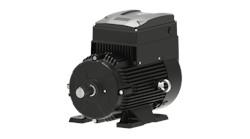EPA investigates innovations to reduce Cape Cod nitrogen pollution
BOSTON — Jan. 21, 2016 — The U.S. Environmental Protection Agency (EPA) is working with five communities in Massachusetts on a project to cut the amount of nitrogen and other nutrients flowing into Cape Cod waters from polluted groundwater, according to a press release.
The pilot project in Barnstable, Dennis, Falmouth, Mashpee and Orleans will investigate innovative treatment technologies such as a Permeable Reactive Barrier (PRB), which may be able to intercept and mitigate nitrogen reaching Cape Cod water bodies, noted the release.
PRBs are located below the ground surface and use a variety of substrates, such as vegetable oil or wood chips, to intercept nitrogen as it flows towards surface water, stated the release.
Announcing the project last week, Curt Spalding, regional administrator of the EPA’s New England office, said in the release: “EPA is eager to see if this promising, low-cost technology can be applied more widely on the Cape and elsewhere to help solve the problem of nutrient pollution impacting local waters. We have experience with PRBs to remediate contaminated groundwater plumes, so we are hopeful that this technique can also help diffuse nutrient pollution.”
The EPA has chosen sites in the five Cape Cod communities for preliminary investigation to explore their potential as suitable sites for PRB installations, reported the release.
Following initial site investigation, the agency will choose one or more of the most promising sites for more detailed characterization to determine if it can fully support a PRB design and considering the size, depth, type and placement of a potential PRB, shared the release.
Although this project will not include installation of a PRB, a full design will be made available to the towns, noted the release. According to the EPA, the process will help Cape Cod communities decide if a PRB is a suitable solution for future sites and how to design it effectively.
Funding for the project has come from the EPA’s Southeast New England Program for coastal watershed restoration.
You can find the entire release here.


